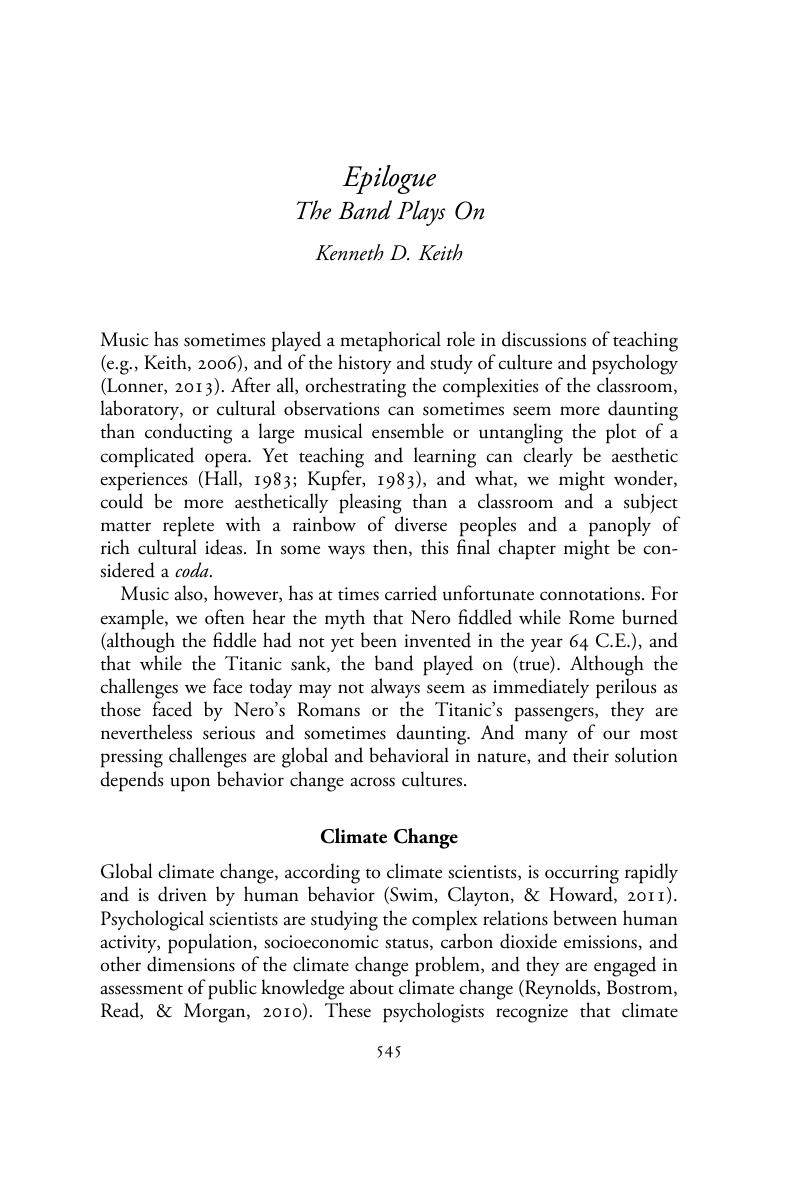Epilogue
The Band Plays On
Published online by Cambridge University Press: 30 March 2018
Summary

- Type
- Chapter
- Information
- Culture across the CurriculumA Psychology Teacher's Handbook, pp. 545 - 555Publisher: Cambridge University PressPrint publication year: 2018



